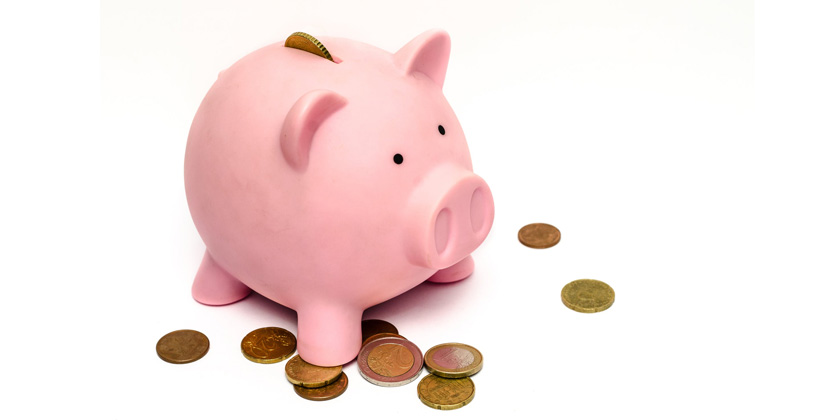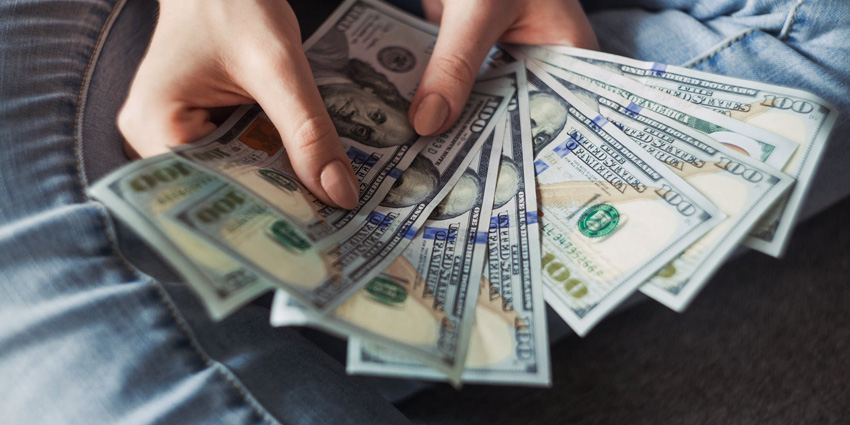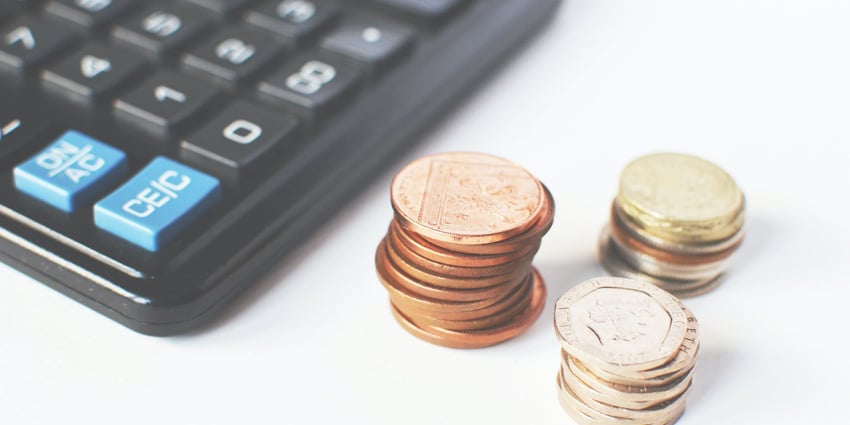
20 Tips to Save Money
Are topics such as saving money your pain points? Do you feel guilty of not being able to save at all? Maybe you always start with a new resolution to save money, but something always pops up.
If the answer to any or all of the above scenarios is a “YES,” you are in the right place. This article will give you twenty easy tips on how you can shuffle things around in your current lifestyle and start saving every month.
It has happened to too many of us that we had good intentions to start putting some money on the side for rainy days, but new expenses just kept coming up. Either the car battery needs changing, or the teenager broke the school laptop, or the house roof starts leaking – and just like that puff! The whole paycheque vanishes into thin air.
So what do you do? Well, like all of us, you tell yourself, “I will look into ways to save money when I have reached a certain threshold of the pay scale, reach a certain age, or a career milestone.”
But, we all know the reality – the only way to save money is not the milestones but you. You can only start to save by adopting healthy money habits and getting into a mindset that your future is more important than your current wants. That is when make saving money your top priority.
But hey, do not fall into the trap of having everything magically aligned perfectly; create a setup for you to save. Be practical, as there are numerous (and we do mean numerous) practical ways you can save money and let your budget breathe a little.
All you need are a few tweaks to your budget and spending, and you will find yourself on a fast track to saving money. Trust me; it is not rocket science.
The Importance of Saving Money
It is always important to have some money tucked aside for emergencies and cover unforeseen expenses. According to a Bankrate survey 2019, only 18 percent of the U.S. citizens said they could live off their saving for an average of six months.
In fact, nearly 40 percent of Americans will need to borrow money for a $ 1, 000 emergency expenses.
That emergency may be anything from a car repair to expensive medical bills, your heating system breaking down, or sudden loss. Now, if you lost your job, you would be thankful to have socked away a substantial amount into your savings account. It would help you to ride the turmoil financial tide while you look for a new job.
Ideally, your savings should have enough money to cover at least three to six months of your expenses. According to the Bureau of Labor and Statistics estimates, an average household’s yearly spending is $ 61,224, i.e., $ 5,102 per month.
That translates your emergency funds for six months must have at least $ 30,000.
We would recommend that you start by putting at least $500 aside every month. If you aim to get rid of debt, save enough till your emergency deposits accrue at least three to six months equivalent to your monthly income.
If you are a single person or live in a household with one income source, you may have to accumulate a larger emergency fund. Why? Because you will not have a buffer if that one source of income is gone.
If you are about to retire or consider early retirement, that is a significant reason you should save proactively. The sooner you start, the lesser you will have to save or worry in the future.

Saving for your retirement often happens within a special retirement account, such as 401(K). The money you invest in this account has the potential for value appreciation and earning interest.
When you compound the interest, it grows more rapidly.
To give you an example, suppose you opened an account with a dollar and deposited $100 each month for the next ten years and received 6.5 percent interest compounded per annum. By the end of ten years, you will have $ 16,195.18.
Keep that amount for another ten years in the account, and you will have more than doubled your money to a handsome amount of $ 46,593.89.
Now let us say you started saving at 25 with 30 years of saving of $100 a month at a 6.5 percent return rate. By the time you reach the age of 55, you will have a whopping $ 103,656.45 (compound interest included) in your savings account. Calculate your compound interest here.
However, there is no guarantee of such a rate of returns, as you do risk losing your money when investing. That said – historical figures show the gains to be positive, and with investing for so many years in the market, you will recover from eventual dips.
In case you have a retirement sponsored by the employer, we recommend that you match your employer’s contributions. Eventually, your target should be to contribute between 10 and 15 percent of your gross income. You can contribute towards your 401(K) and an IRA.
Here are some reasons to get you motivated by envisioning scenarios;
- Saving for a down payment of your dream house
- Saving to maximize your interest rates – (Remember, the magic of compounded interest we mentioned earlier)
- Saving for a dream car, vacation, or other exponential purchases
Is There a Formula for Saving?
If you are already minimizing a debt, putting some money aside for retirement, and bringing in more than your monthly spend, we would say you are doing alright financially.
But, if you wish to achieve bigger financial goals, such as becoming a millionaire or an early retirement, you will have to learn how to build wealth quickly.
You can always learn how to breakdown and calculate the rate of your personal savings. According to Investopedia, that rate is the money expressed as a ratio or percentage that you deduct from your disposable personal income and keep it aside for emergencies or retirement.
The formula for saving is simple, and as follows:
Your monthly income – spending/expenses divided by your total income. Whatever the total is, multiply it by 100, i.e. income-spending / total income X 100
Here is a quick four-step breakdown for each component of the formula and how you can determine each.
- Calculating your income for a specific duration or period
- Calculating your spending or expenses for the same duration or period (as 1)
- Next, you have to subtract the spending from the income to find out how much you are saving. Now divide this remainder number by your total income
- Whatever you get from (3), multiply that by 100.
Voila! You have your saving rate or percentage. However, whenever you calculate the saving rate, you must include your income after taxes, or you will end up over-estimating your savings.
20 Ways to Save Money
1. Start a Budget
If you have been frivolous with your money, it is time to put a stop to it and mend your ways. Start budgeting what comes and what goes out of your earnings. Look for even the smallest areas where you can potentially make some savings. It does not have to be big bucks, even a dollar or two here or there matter.
2. Automate Your Savings
Learn automation of your saving, so you do not have to sit with a calculator and bank statements to balance your sheet. After all, saving is for convenience, not to turn you into an accountant. But, you will have to keep some sort of check and balance on your spending. You can set a monthly direct debit for a certain percentage of your earnings to go into your savings account.

3. Download Money-Saving Apps
Did you know there are quite a few money-saving apps available on Apple App Store and Google Play? These apps promise to offer you help as a personal financial planner. You can get regular updates on your bank withdrawals, deposits, and transfers and get real-time snapshots of your spending habits.
4. Start Meal Planning
Meal planning can make a huge difference. Have breakfasts in the morning and smaller meals during the day. Grab an easy-to-use cookbook such as “How to Cook Everything” by Mark Bittman and try to start cooking some of your meals at home.
You will soon realize that cooking at home is way more convenient than you think. Moreover, it is cheaper and healthier than ordering a takeaway or dining at a fancy restaurant.
If you have a busy lifestyle, it is even better to cook your meals for the week in advance and freeze them. Avoid fast foods; they are unhealthy, over-rated, and over-priced.
5. Check-in on Subscriptions
Check all your subscriptions such as cable-TV, internet, magazines, Netflix, and other streaming services. Are you really making the most of them, or are they just coming in every month? It is time to weed out the ones that you use the least and can live without.
Let us be honest; if you have not been too keen on using a subscription, what are the chances of doing it now. So, unload the boat and get rid of the extra weight you have been carrying on your finances.
6. Save Money on Books
If you an avid reader, it is time to make a slight adjustment. Instead of buying books, borrow books at the library.
Moreover, visiting the library will make you realize that it is a free source for many other things. For example, you can meet people, use the internet, check out CDs and movies, and even grab free local newspapers. You can even keep a tap on free community events.
Best of all, it would not cost you a dime.
7. Compare Grocery Prices
Most of us have a habit of shopping from the same grocery store. You may not have realized that you are not getting the best price. Thanks to Google, it is simpler than ever to look for the cheapest grocery stores in your locale.
All you need is to keep track of at least 15 to 20 of them. Make a list of things you frequently buy and shop for those items at various stores. Eventually, you will learn which store comes out on top as the cheapest for your shopping list.
Make that store your regular shopping destination and start saving automatically.
8. Ditch Your Gym Membership
Have you been paying dues at a gym that you never visited? For instance, if you have a country club or gym membership but never visit, it is time to ditch. If you have been on the fence regarding membership or find that it is not good value for money because you hardly use it – it is time to cancel.
Remember, you can always go back and renew it at a later date.
9. Find Free Events
Check your local town hall and community websites for free events. Your town may have several free tennis and basketball courts, wonderful parks, free disc golf, trails, and other stuff waiting for you to use them without spending a cent.
Have fun at these facilities for an hour or two. Have a walk in the picturesque outdoors, hiking on trails, playing sports, or trying other activities. It is all out there for free; you just need to fish for the ones that suit your taste.
10. Start a Garden
Do you have a yard at your home? Then gardening can be a very therapeutic and inexpensive hobby. Get a tiller on rent, till up the patch, plant some seed and watch them grow. You can have a hobby and produce your own healthy good.
You can grow your tomatoes, Basil, coriander, ginger, lemons, bell peppers, and other herbs and vegetables. Not only will you be saving money but getting fresh produce and eat healthily.

11. Analyze Your Credit Card Habits
It is time to start using your credit card wisely. Do you have a habit of overspending? Better hide your credit card, make your partner or another family member in charge of it, or keep them in a safe place (No, the safe compartment in the wallet does not count) at home, especially when you go shopping.
Keeping the card out of sight and mind may help reduce the temptation to splash the cash.
12. Avoid Impulse Purchases
Are you a shopaholic or cannot resist the urge to impulsive buying? It is time to stop it. If hiding the credit card is not enough to stop you, we need to cut you at the source. Meaning you must avoid login online to shopping websites and avoid visiting the malls as much as possible.
If you are not going to see it, there will be no temptation to give in.
13. Unsubscribe From Marketing Emails
It is time to cancel all your magazine subscriptions and unsubscribe for all marketing emails you used to get. This will stop you from getting tempted to buy a product or service that you would not miss otherwise.
14. Take Care of Your Health
You can maintain your health without hitting a gym. Grow your own veggies, cook at home, and eat healthily. There is a plethora of YouTube influencers and celebrities conducting live sessions and uploading videos of exercise you can do at home to stay fit.
15. Pack a Lunch
Instead of ending up at a restaurant on your lunch breaks, pack a lunch such as snacks or easy to-go meals. Not only will it save you money on overcharged restaurant food, but also save on fuel and parking while looking for a decent place to eat.
16. Make Your Own Cleaning Supplies
You can make your own laundry detergents. Not only that, but you can also try making your own Windex, Glade, and soft scrubs. They are way cheaper than their commercial counterparts.
Google to find if you can make a homemade version of the cleaning products you frequently buy. We are sure you will find something to get you started.
17. Trade Your Night Out for a Night In
This one is a bit tricky, but there are numerous techniques for you to try. Our favorite is to be first to suggest something and then steer the conversation into cheaper options.
It would be great to convince your friends or family to come over or do a house party. This is cheaper and safer than painting the town red while emptying your bank account.
18. Avoid ATM Fees
Try to use the ATMs that offer free withdrawals. It is best to withdraw cash in advance than being stuck in an ATM vestibule where you have to pay to withdraw your own money.
19. Make Your Own Coffee
We all love to start our day with a strong cup of coffee. However, they are getting expensive every day. So, it is best to start brewing your own coffee at home and save money.
20. Refinance a Loan
If you have equity in your property, you can always consider remortgaging it. According to Forbes, it is easier to get a cheaper refinance these days. So you may be able to secure cheaper interest rates than what you had with your primary loan or mortgage.
How Much Can You Potentially Save?
There is no universal answer to this question –how much you can save depends on various factors. These include your income, your expenses, number of dependents, debts, etc. However, like if you remember what we said earlier in this article, ideally, you must be able to put 10 to 15 percent of your income aside each month. (But that is a best-case scenario).
Start small and steady. Saving is not an activity but a lifestyle that will take time to adopt. So go easy on yourself but do not give in to temptations.
Conclusion
As you start saving money, you may also consider saving money for your kid’s education as well. In that case, you can use the U.S Securities and Exchange Commission’s (SEC) 529 plan. It is an attractive and effective saving choice as your money will grow tax-free.
That said – we hope this article will give you create a solid foundation for your savings.
Happy Saving!
Cary Silverman is a consummate entrepreneur having sold multiple companies during his 20 years of business experience in the financial industry, but for him, it isn’t about the money. His success is rooted in his passion to focus on doing something better today than it was done yesterday. These days, he’s the CEO of Waldo General, Inc. that oversees the operation of King of Kash.

